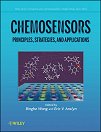Many key developments that have been introduced in modern industry during the last three decades are based on chemical sensors. These innovative devices have applications in many fields of our modern world, such as environmental monitoring, process control, and health-care.
The book Chemosensors, edited by B. Wang and E. V. Anslyn, is organized in four sections consisting of chapters written by experts in their fields.
- Section 1: Fundamental phenomena important for every chemically sensitive layer
- Section 2: Different types of receptors
- Section 3: Chemical sensors (receptor combined with transducer)
- Section 4: Case studies of potential commercial applications
Franz Dickert, Department of Analytical Chemistry, University of Vienna, Austria, thinks the book will be especially valuable to readers who are interested in modern supramolecular chemistry. However, he suggests the title should be changed to “Supramolecular Chemistry—Possible Applications in Chemical Sensing”.
Dickert thinks that because all four sections of the book contain many contributions on special topics from a large number of authors, some chapters are highly specialized and there is overlapping of some topics.
In his opinion, the main part of the book deals with intermolecular interactions, but does not explain how to design a complete sensor to measure an analyte.
Usually, a sensor is characterized in terms of its analytical capabilities. The selectivity and sensitivity of the sensor should in Dickert’s opinion be given precisely, and the data should be presented in the form of sensor characteristics. Furthermore, the dynamic behavior is important both with regard to saturation effects and to rise and decay times.
- Read the full review at:
Angew. Chem. Int. Ed. 2012, 51(21), 5039.
DOI: 10.1002/anie.201201767 
Chemosensors. Principles, Strategies, and Applications
,
Binghe Wang and Eric V. Anslyn (Eds.),
John Wiley & Sons, Hoboken, USA, 2011.
ISBN: 978-0-470-59206-9



